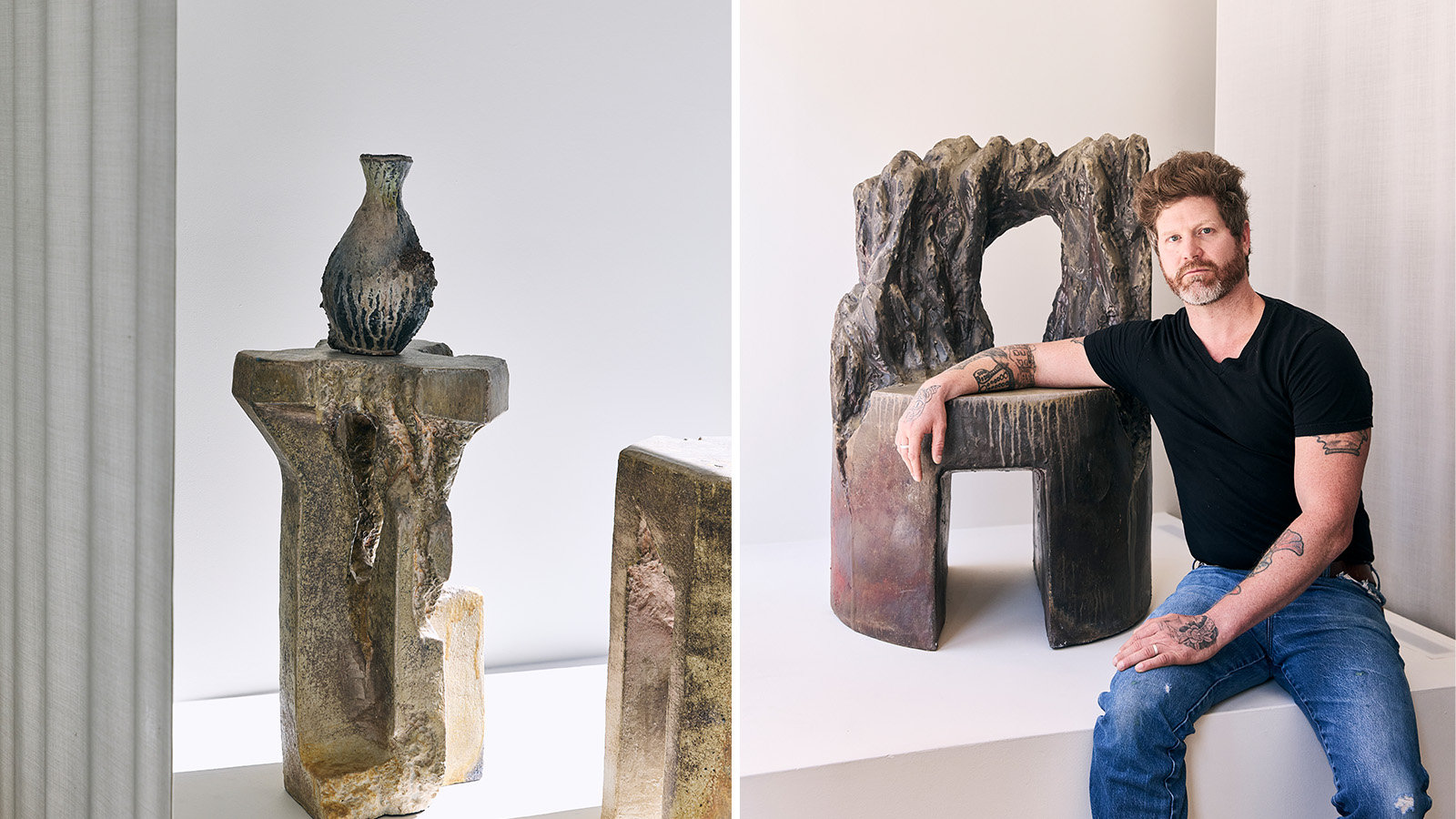
The awe-inspiring vastness of Montana’s landscapes is ever-present in ceramic artist Casey Zablocki’s monumental works. Living and working amid the dramatic terrain of the Rocky Mountains naturally translates into sculptures of sheer scale and visual weight – almost primordial in form and surface treatment. Zablocki uses one of the largest wood-fired anagama kilns in the US to produce such massive pieces, which are cracked, eroded, and discoloured, as if formed and then slowly degraded over many millennia, just like the valleys and crevices of the geology in his workshop’s vicinity.
Casey Zablocki’s monumental works
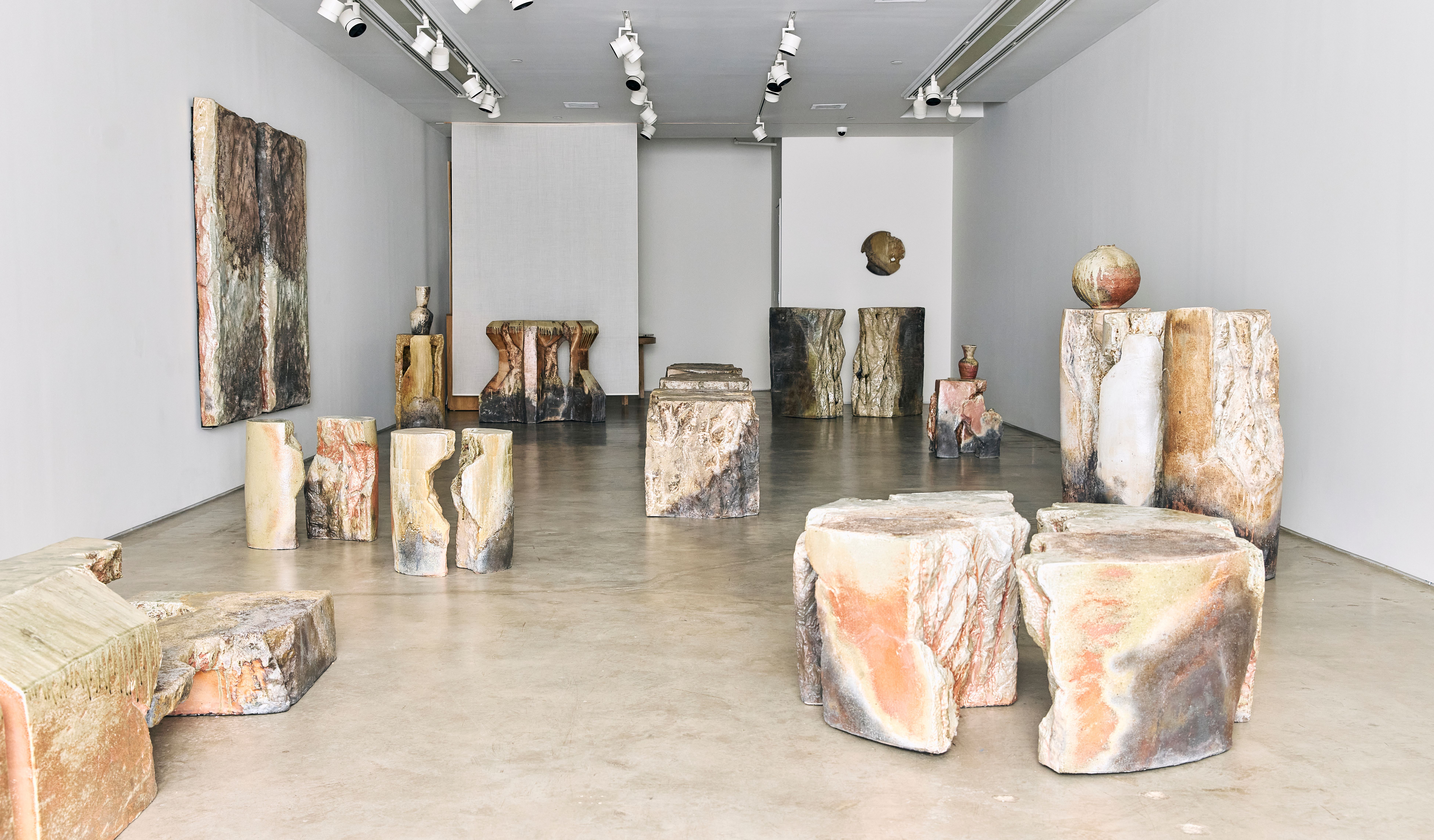
‘If you look at my work, it references all of that [landscape] without even trying, because that's just where I live, and I'm surrounded by this beauty,’ Zablocki tells Wallpaper* ahead of his latest exhibition, at Roman & Williams’ Guild Gallery in New York City.
The solo show presents his latest body of work, ‘Ceramic Furniture’, which includes over 20 pieces that evoke a lost brutalist civilisation or ancient rock formations, as if uncovered in the gallery space after being buried under the earth for an age. ‘They feel like they’re almost coming out of the ground, or have been part of the ground,’ says the artist.
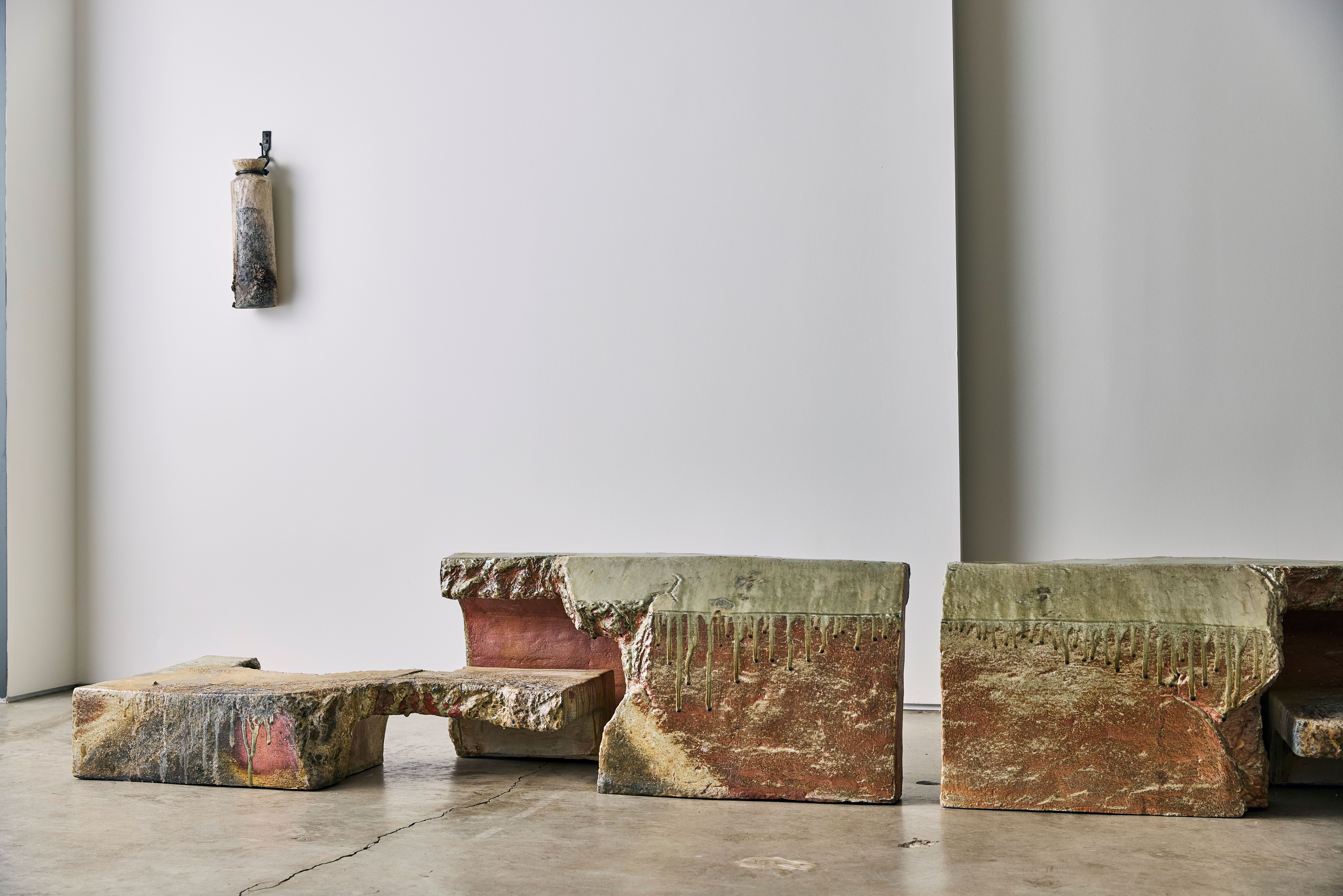
Over 15,000 pounds of clay – mixed in a unique recipe – was used to create the works, each of which is designed to be functional in some way. They include a giant throne-like chair, a trio of monolithic benches upon which Zablocki imagines sitters ‘observing other artworks in a museum’, and a coffee table comprising a pair of semi-cylindrical podiums that appear to have cracked apart then been placed, but not attached, back together. ‘I wanted to simplify the work so you focus on material and [are not] so distracted by form,’ he explains. Across the various designs, porcelain is applied as a slip glaze that adds texture and colour, resulting in glossy hues that range from russet, pink and yellow, to those resembling Korean celadon or Chinese blue.
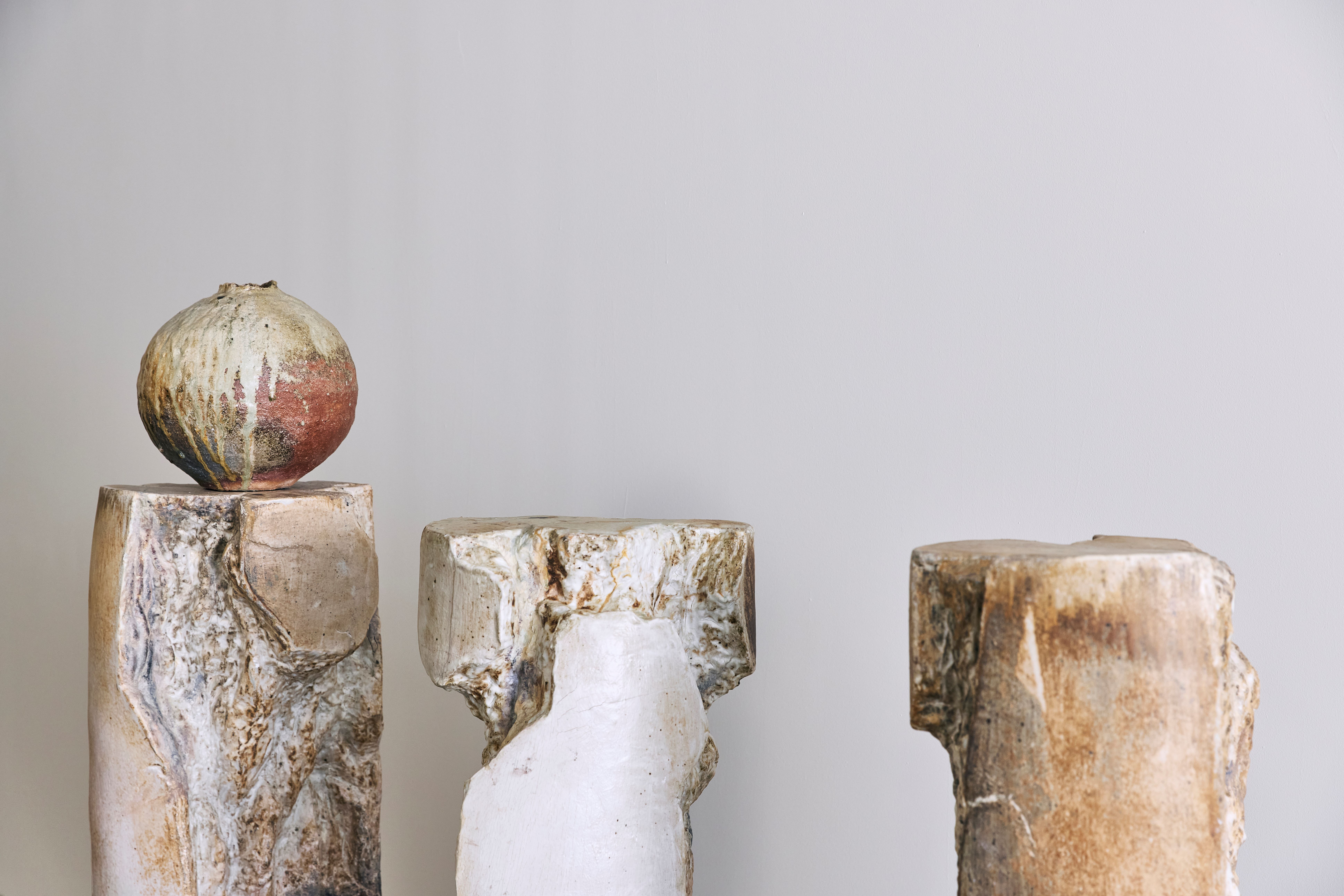
Time and tension both play a critical role in Zablocki’s practice. Not only do the raw materials he uses take millions of years to form, but his pieces require eight days of firing at immensely high temperatures, then almost a week to cool again before they are taken out of the giant kiln. They also demand a huge amount of physical labour to create, from the harvesting of the clay – which Zablocki does himself – to the moving of these huge objects in and out of the kiln on rollers, and the tending and fueling of the fires with fresh wood day and night during the firing process.
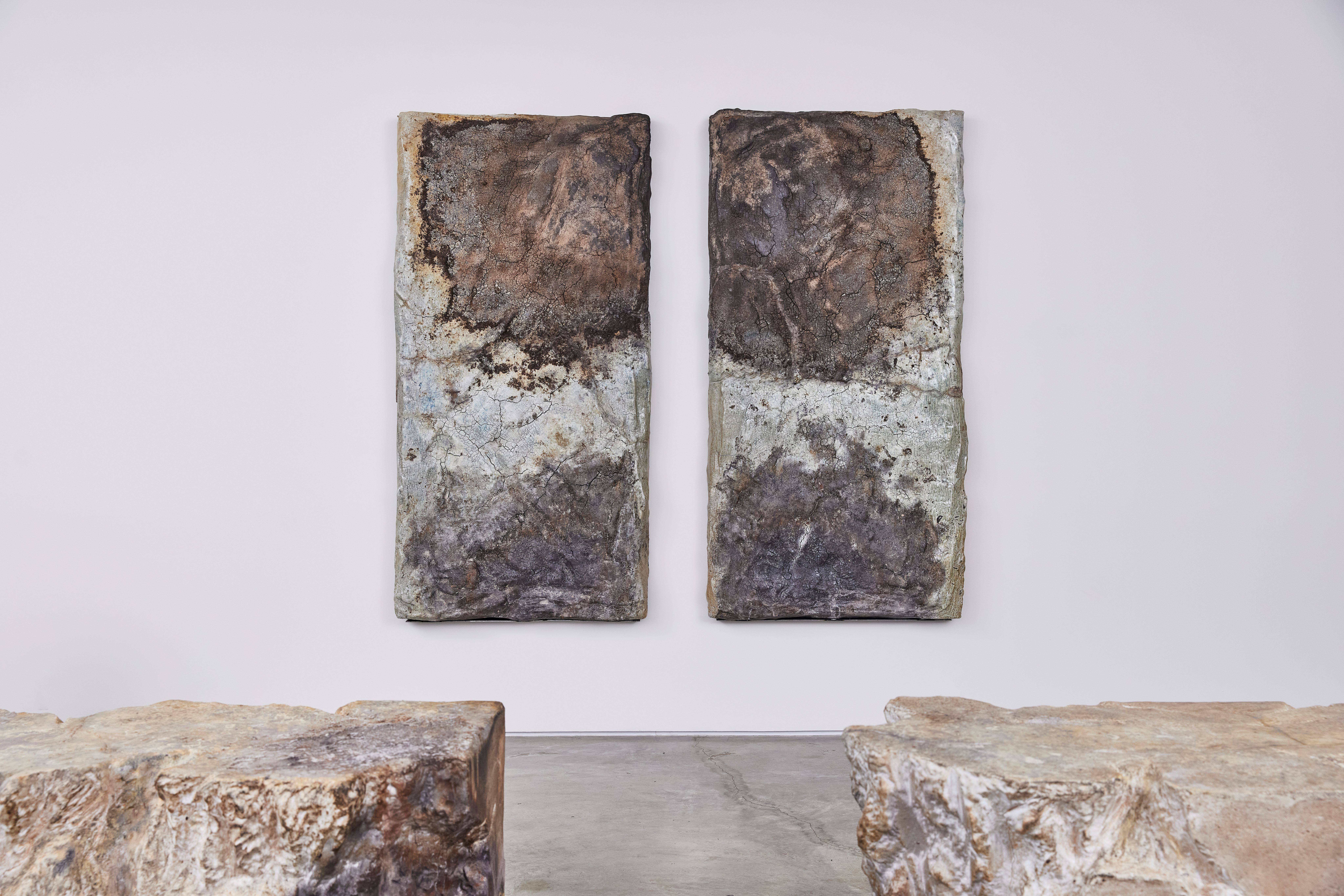
For Zablocki, making and creating with his hands – and his whole body – is part of who he is, and the passion and dedication to his craft is palpable when he speaks about it. After completing his post-baccalaureate studies at Montana State University, Zablocki apprenticed with anagama (a Japanese wood-fired kiln) expert Peter Callas and renowned South Korean sculptor Hun Chung Lee, before setting up his own practice in Missoula.
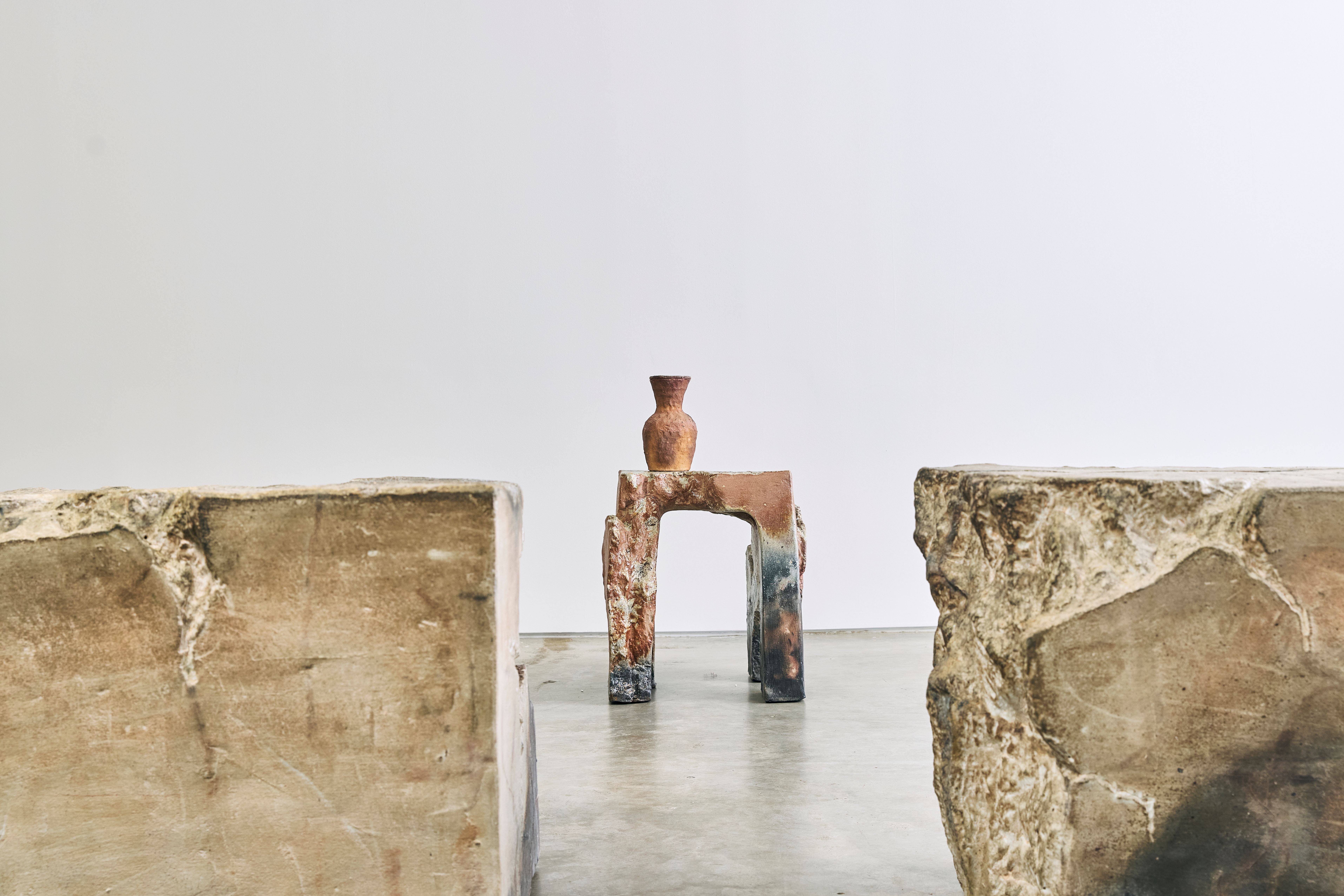
The ‘Ceramic Furniture’ series follows an earlier exhibition at Guild Gallery, titled ‘Modern Relics’, which had a more muted palette derived from the kiln ash of local woods. For the latest collection, developed over two years, Zablocki sourced the clay locally for the first time, creating an even more intrinsic link between the sculptures and the landscape, and a very personal medium that can lead to new directions and experimentation for his work.
The exhibition at Guild Gallery, New York, continues until 22 November 2024
zablockiceramics.com







